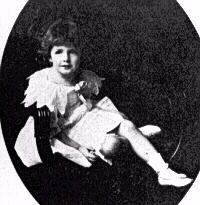
Figure 1.--A portrait British Prime Minister Anthony Eden painted about 1902. I am not sure how typical the dress was. A contributor tells me that the portrait was painted by his father who may had him dressed up easpecially to be painted.


Figure 1.--A portrait British Prime Minister Anthony Eden painted about 1902. I am not sure how typical the dress was. A contributor tells me that the portrait was painted by his father who may had him dressed up easpecially to be painted. |
Europeans for centuries dressed little children, both boys and girls in the same styles of dresses, often referred to as petticoats. For most of this time, no special clothing existed for childrn, boys or girls. Boys when they were "breeched", were simplly dressed in smaller versions of the knee breeches and other clothes worn by their fathers. Special clothes for children appeared in the late 18th centuty with distinctive styles for boys and girls. Even so, many mothers continued to dress small boys in dresses for more than a century. This fashion also became common in America and persisted well into the 20th century.
|
Dresses especially made for boys continued to be popular in the early 1900s. It was still common for younger boys to wear them. Fashion magazines were still advising mothers in the early 1900s that, "petticoats for samall boys are to be recommened in every way ... the putting of infants at an early age into woolen knickerbocker suits cannot but be bad for them physically." There were no hard rules on the dress styles worn by boys. The trend was for boys to wear plainer dresses and for fewer older boys to wear them. This convention was, however rapidly declining in popualrity. It became notably less common in the 1900s anafter World War I (1914-18) it became realtively rare except for infant. The dresses that boys did wear became increasingly plain with less ruffled and lace trim. White desses predominated.
The custom of dressing little boys in dresses declined in the second decade of the 20th Century, especially after the World War I (1914-18). The War was a major divide in many ways separating the 19th century certanties with the more jaded outlook of the 20th century. I'm not sure why children's clothes changed so fundamentally. It was not only children's fashions that changed. Women put away their corsets and by the 1920s were bobbing their hair, shortening their skirts, and even sneaking a smoke. For many the War was a loss of innocence, perhaps this was reflected in changing, more mature fashions for children. Someof the pre-war fashions and customs survived into the 1920s, but by the mid 1920s, American boys were wearing the new fashions and the custom of dressing small boys in dresses was no longer widely practiced.
|
The most common type of dress by the end of the war were simple little shifts worn by very young boys informally at home. They were often white or light colors with minimal styling.
Little boys were by the 1920s commonly outfitted in rompers instead of dresses. Older boys wore short pants and knickers. By the late 1920s it had become unsusual to see a boy, evan a baby, in a dress. A few boys were outfitted in smocks during the 1920s, but this was little seen by the 1930s, except for school wear in France, Italy and some other countries.
Outfitting boys in dresses has never entirely disappeared. Many infants are still outfitted in christening dresses. Even as late as the 1940s and 1950s some small boys were still being outfitted in dresses by doting mothers. Almost always these were boys from rather wealthy families. This seems to have been more common in Britain than in the United States. Usually it was boys from wealthy families. Prince Charles, for example, appeared in dresses during the mid-1950s. The boys involved were almost always very young--no older than 2-3 years old.
|
Alexander Mosley: Britain in the 1940s
[The 1500s]
[The 1600s]
[The 1700s]
[The 1800s]
[The 1840s]
[The 1870s]
[The 1880s]
[The 1890s]
[The 1900s]
[The 1910s]
[The 1920s]
[The 1930s]
[The 1940s]
[The 1950s]
[The 1960s]
[Return to theMain dress page
[Pinafores]
[Sausage curls]
[Smocks]
[Bodice kilts]
[Kilts]
[Fauntleroy dresses]
[Sailor dresses]
[Fancy dresses]
[Dresses: 16th-18th centuries]
[Dresses: Early-Mid-19th century]
[Dresses: Late-19th century]
[]
[Difficult images]
[Movie dresses]
